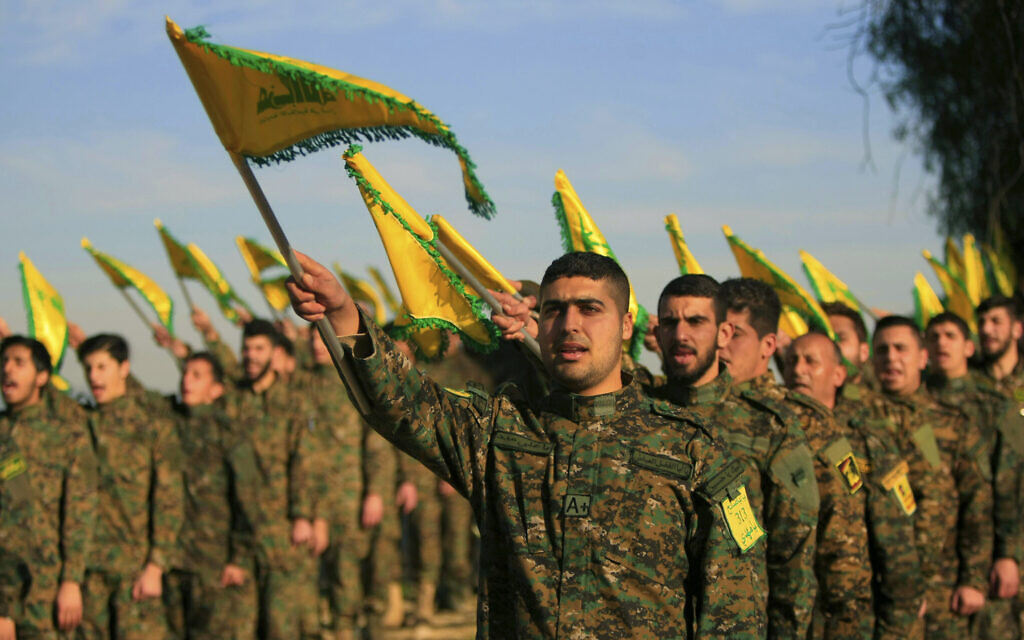By Adam Rousselle and Scott Morgan
Rising tensions along the Israel–Lebanon border have prompted increased concerns of a regional conflict among the international community. As a result, U.S. forces in the region remain on high alert at a time of heightened global sensitivity to tensions in the Persian Gulf. In this article, we explore the scope of the current conflict between Israel and Hezbollah and the broader implications of a regional war involving Iran.
Mounting Israel–Hezbollah tensions and the specter of Iranian involvement
On Sunday, Hezbollah launched guided rockets and artillery at the Golan Heights region of Shebaa Farms: the group claimed that the attack was in solidarity with the Palestinian resistance and no fatalities were reported. Israel responded by shelling Hezbollah positions on Monday, killing at least three militants. Israeli strikes have continued to intensify with southern Lebanese residents claiming that recent shelling and air strikes are reminiscent of the 2006 war.
Hezbollah has effectively controlled southern Lebanon since the Israeli military withdrawal in 2000. The predominantly Shi’a militant group originated among residents there in the early 1980s in response to the Israeli military occupation. Throughout its existence, Hezbollah has maintained close ties to Iran, which provides the group with extensive material and financial support.
Most notably, the militant group is estimated to possess 130,000 Iranian-supplied rockets: enough to devastate major cities in Israel’s densely populated central region. Tensions between Israel and Hezbollah have remained high for over two decades and have escalated steadily in recent months: on August 12, Israeli Defense Minister Yoav Gallant said that “if… an escalation or conflict develops here, we will return Lebanon to the Stone Age.”
Moreover, while Iran remains capable of striking Israel via Hezbollah, recent military exercises demonstrate Israel’s ability to strike Iran with long-range missiles. In this way, a major strike by either side would almost certainly prompt a massive regional conflict with global consequences.
The threat of regional escalation
The threat of a broader regional escalation has caused the United States to send its Ford carrier fleet to the eastern Mediterranean and the Carrier Eisenhower is expected to leave the United States for the region by the end of this week. In a speech on Monday, President Biden said he “made it clear to the Iranians: be careful”.
Earlier that day, White House national security spokesman John Kirby claimed in a television interview that Iran was complicit in Saturday’s attacks but admitted to having no evidence or intelligence to corroborate this claim. Joint Chiefs of Staff Chair General Charles Q. Brown also warned Iran “not to get involved” in the escalating conflict.
The potential geostrategic consequences of an escalating conflict between Israel and Iran are vast in scope, particularly in the Persian Gulf. The United States has withdrawn a Marine Unit that was conducting a scheduled exercise with Kuwait “as a result of emerging events.”
Elsewhere in the region, U.S. forces remain on high alert with the Bahrain-based Fifth Fleet reportedly readying teams of armed sailors and Marines to embark on commercial ships entering and exiting the Gulf. Strategic vulnerabilities in the Persian Gulf have long been speculated with the Tanker War of the 1980s and the 2000 Al-Qaeda attack on the USS Cole being possible scenarios that could occur should tensions continue to rise.
Geostrategic concerns
Crude oil produced in the Persian Gulf accounts for 20–30 percent of global consumption and the region also exports around 18 percent of the world’s liquified natural gas (LNG). All shipping traffic to and from the Gulf must pass through the Strait of Hormuz: a 96-kilometer-wide strategic chokepoint between Iran and Oman.
Tehran has threatened to close off the straits before and should it do so now, or if its proxies act in such a way as to have the area declared a conflict zone by international insurers, the result could be globally catastrophic.
The European Union’s growing dependence on Qatari LNG due to the war in Ukraine and China’s heavy reliance on Gulf energy amid its unfolding economic crisis are among the world’s largest vulnerabilities in this regard. Although an Iranian closure of the Straits would still allow the Saudis to export crude through the Red Sea Port of Jeddah, the other Gulf producers would effectively be cut off.
While the development of a freight rail line connecting the Gulf Cooperation Council (GCC) states to Jeddah is underway, it is far from completion. In this way, as the global economy continues to struggle with inflation and a possible recession, a closure of the Straits of Hormuz is a potentially disastrous prospect.
Although Iran and Saudi Arabia resumed formal relations in March and leaders from the two countries recently discussed the unfolding conflict in a phone call on Wednesday, Gulf tensions remain high. With global energy prices just starting to fall and inflationary pressures remaining, the emerging conflict between Israel and Iran will be among the most important geopolitical factors to monitor closely in the coming months.
@Militant Wire

